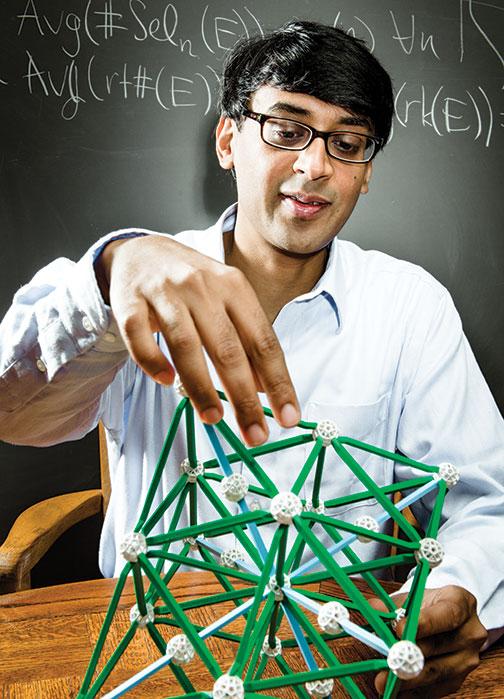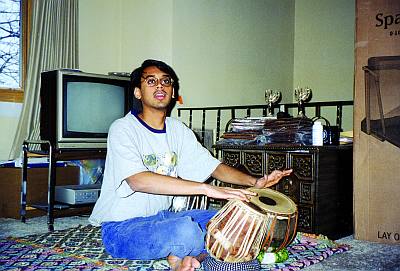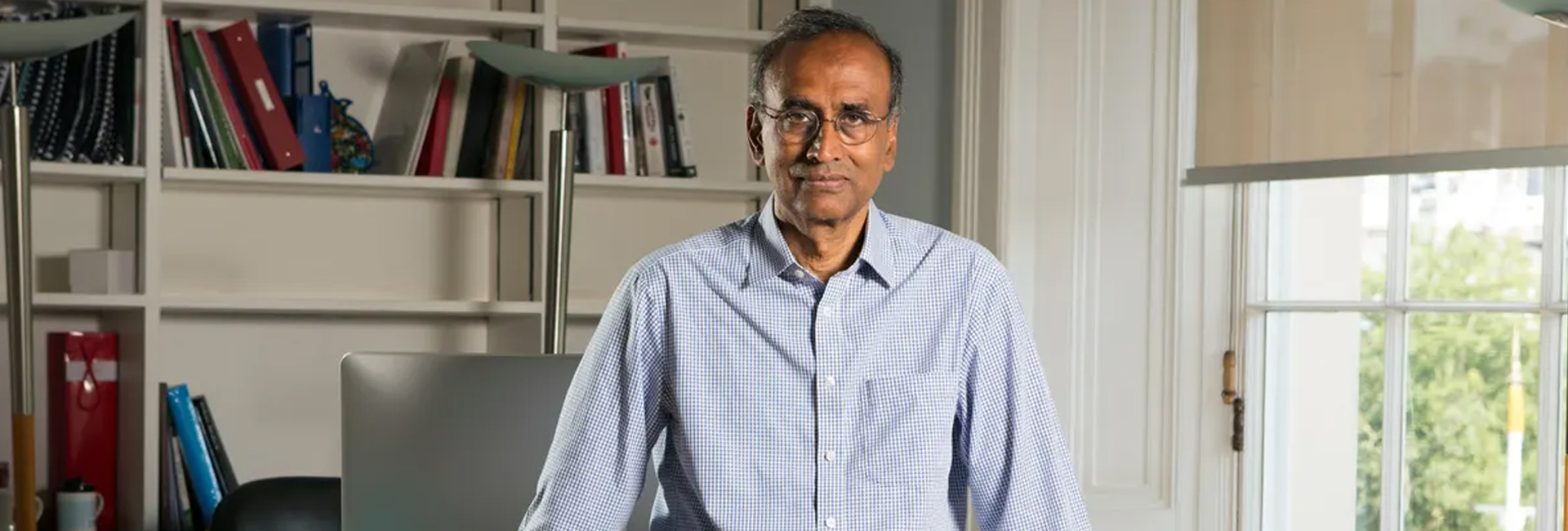(July 6, 2024) In the summer of 1998, Manjul Bhargava’s eye caught a mini Rubik’s cube sitting in a corner of his room. He began visualising numbers on each of the corners and in his own words, “saw binary quadratic forms coming out, three of them.” Bhargava, who was a student at Harvard University then, wrote down the relations between them and realised he had found a description of Gauss’ Law (which explains how electric fields behave around charged objects). He linked it to the work of the ancient mathematician Brahmagupta, which he had read in Sanskrit as a child. It was one of Bhargava’s first major breakthroughs, which paved the way for his winning the Fields Medal in 2014.
To Bhargava, Math is music, and poetry and patterns – and magic. He brings this playfulness to his lectures at Princeton too, where he became the youngest ever full mathematics professor at the age of 28. In class, he is known to use magic tricks, puzzles, toys, poetry and music, which he believes “should all form a key part of the mathematics classroom. When people see mathematics done as described above, as a playful, creative, interactive subject, they see that it is not terrifying at all,” he gushes. “It is beautiful!” Once, he even used chocolate bars to demonstrate the principles of algebra, cutting and rearranging the pieces to solve equations. This hands-on approach not only demystifies complex concepts but also infuses a sense of play and discovery into the learning process.

Manjul Bhargava
Apart from the Fields Medal, Bhargava’s accolades include the Padma Bhushan, one of the highest civilian awards in India, and the Infosys Prize, recognizing his contributions to the mathematical sciences. He has also been elected to the National Academy of Sciences, an honor reserved for distinguished scholars in recognition of their original research.
Early life
Manjul Bhargava was born on August 8, 1974, in Hamilton, Ontario, Canada, to a family deeply rooted in academia and the appreciation of classical Indian culture. His mother, Mira Bhargava, who is a Mathematics professor at Hofstra University in New York, told Quanta that his interest in Math became evident when he was a toddler. The only way to make him sit still, she said, was to ask him to add or multiply large numbers, he would do by “flipping his fingers back and forth and then give the right answer. I always wondered how he did it, but he wouldn’t tell me,” she said.
At the age of eight, he would stack oranges into pyramids before they went into making juice. Several months later he produced an equation to figure out a formula for the number of oranges in a pyramid. By this time, he was also attending his mother’s math classes in college, even correcting her if she made an error.

Photo: Peter Murphy
Another big influence in his life came from his occasional trips to Jaipur to see his grandparents. His grandfather was Purushottam Lal Bhargava, a renowned scholar of Sanskrit and head of the Department of at the University of Rajasthan. Learning from his grandfather, Manjul Bhargava fell hopelessly in love with Sanskrit poetry, and found, to his total delight, that they were highly mathematical. “I also learned from my grandfather how much incredible mathematics was discovered in ancient times by scholars who considered themselves not mathematicians but poets. Linguists such as Panini, Pingala, Hemachandra and Narayana discovered some wonderful and deep mathematical concepts while studying poetry.”
He found math in music too and learned to play a number of instruments although he had a special love for the tabla. He enjoyed thinking about the mathematics of the complex rhythm structures contained in Hindustani and Carnatic classical music.
University life
In 1991, Manjul Bhargava graduated from Plaineridge High School in North Massapequa, and had already been admitted to Harvard University. That was where he decided on a career in Mathematics – he had toyed with many options, including being a musician and an economist. He graduated in 1996, winning the Morgan Prize for his research. From there, he went to Princeton University with a Hertz Fellowship and worked under Sir Andrew Wiles, a Royal Society Research Fellow at the University of Oxford. By this time, he had a slew of awards to his name, including the Hertz Fellowship, the Hoopes Prize and the Morgan Prize.
In 1991, he graduated from Plaineridge High School in North Massapequa, and had already been admitted to Harvard University. He graduated in 1996, winning the Morgan Prize for his research. From there, he went to Princeton University with a Hertz Fellowship and worked under Sir Andrew Wiles. It was during his time at Princeton as a graduate student that he also solved a 200-year-old math problem.
Solving Gauss’ composition law
As a child, Bhargava had read, in one of his grandfather’s Sanskrit manuscripts, a theorem developed by the great mathematician, Brahmagupta, which had excited Bhargava very much at the time. Then, during his time at Princeton, he discovered the work of Carl Gauss and his composition law, which is one of the pillars of electromagnetic theory. Was there a simple way to describe Gauss’ 20-page law, Bhargava wondered.
He sat with the question and one night, as he sat in his room which was “littered with mathematical toys,” he looked at a mini Rubik’s Cube. There are three ways to cut a Rubik’s Cube in half, and each of the three forms, Bhargava found, add up to zero. He had found an elegant, more minimalist explanation of Gauss’ Law, which today is known as Bhargava’s Cube. That became the core of his PhD thesis at Princeton, for which he won a five-year Clay Postdoctoral Fellowship.

Making history at Princeton
Bhargava used the funding to stay on at Princeton for another year, as well as at the Institute for Advanced Study, and then moved to Harvard. He was now a very sought after mathematician and at 28, after considering a food of job offers, accepted a position at Princeton University.
In 2014, Manjul Bhargava was awarded the Fields Medal at the International Congress of Mathematicians in Seoul for “developing powerful new methods in the geometry of numbers. He applied these to count rings of small rank and to bound the average rank of elliptic curves. One year later, he was awarded the Padma Bhushan. In 2017, he became a member of the American Academy of Arts and Science and like his mentor, Sir Andrew Wiles, was conferred a Fellowship at the Royal Society in 2019.
Manjul Bhargava’s work has been described as “epoch-making,” and is widely regarded as one of the greatest mathematicians of our time. He also remains a passionate musician and occasionally trains under Ustad Zakir Hussain.



